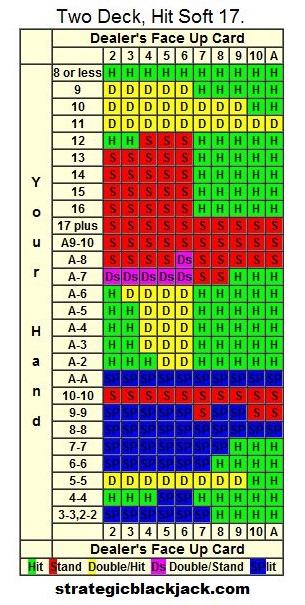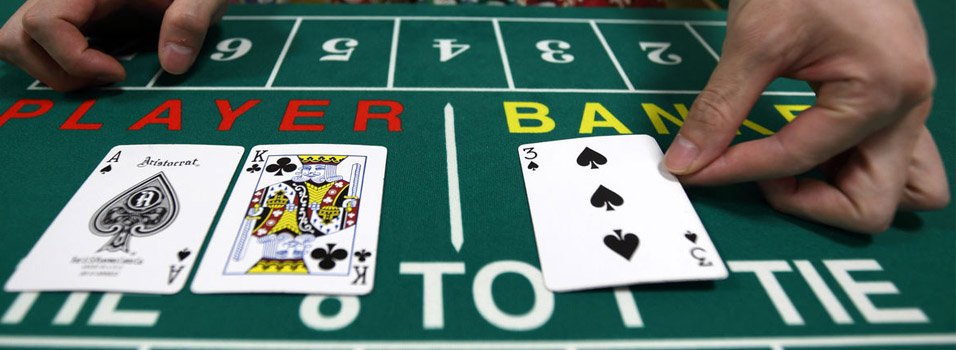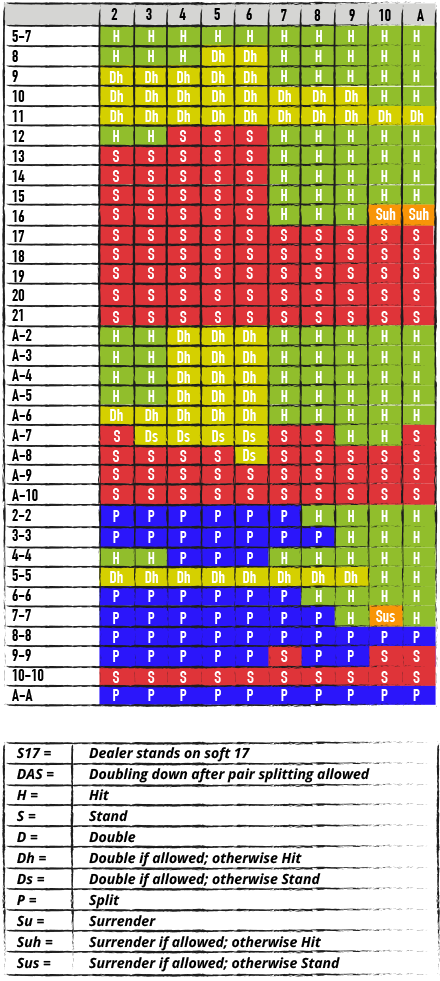Two Deck Pitch Blackjack
The single deck was dealt face-down and double deck was dealt face-up with about 50% penetration for both games. Counting face-down wasn't as bad as I expected because at some point or another everyone does have to show their cards. El Cortez, located just east of the Fremont Street Experience downtown, is one of two casinos in Las Vegas that still spreads 3-2 single deck blackjack. The game is found at most of its tables. The minimum bet is usually $5, but peak hours may become $10. Players may double down on any two cards but not after splitting.
I've never played a shoe game. I only played pitch blackjack (5 buy-ins last Oct 2016, 2 buy-ins Apr 2017). I had small but positive returns on both occasions. My first time to successfully card-count was this past Apr 2017.
http://wizardofvegas.com/member/lostwages/blog/#post1540
On my 3rd trip (maybe end of 2017 or early 2018), I'm thinking to myself that I should try a shoe game AT LEAST ONCE. FYI, I plan to return to stay and play at MSS, not the Cal. In between blackjack, I will go for the scratchers at the Boar's Head Bar or nearby alcoves that have 10/7 DB with 100.62% ER after factoring in 9 more coins when you get a quad.
After trying the shoe game, if I don't like it, I'll revert to pitch blackjack,
However, whether or not I'll like the shoe game, I have already planned to revise my bankroll and betting strategy so that I'm not underfunded, and have enough BR to cover double downs and positive TC counts >=3.
AFTER I'm sure I know the differences between 2-deck and 6-deck blackjack, I'll work on this strategy. Thanks to all the tips from WoV members, I've now compiled what I think is a usable table comparing 2-deck and 6-deck blackjack. I'm trying to plan my 'attack' months before my trip, so that I will act as natural as possible and not attract attention.
My questions are:
1. Did I miss any elements to compare for 2-deck vs 6-deck blackjack? Again, I've never played 6-deck blackjack, so I might easily have misinterpreted tips and suggestions I've been reading on the WoV forum.
2. Any GENERAL guidelines to planning my bankroll? I am a low-roller, and my BR will be under $1,000 for 3 or 4 playing days.

3. If possible, I prefer to play head-to-head early in the mornings, at least until I'm really comfortable card-counting. I understand this means I'd have to play through negative TCs, but is there anything I might be overlooking?
| Comparing | 2-deck Blackjack (pitch) | 6-deck Blackjack (shoe) |
|---|---|---|
| Bankroll | still figuring out, suggestions welcomed! | still figuring out, suggestions welcomed! |
| Bets | Rapidly change, but doesn't last long | Slowly change, but you'll have more rounds to continue with ramped up bet |
| Cards, number of | 104 | 312 |
| Card-counting | Count hole cards when flipped over, and hit cards that come out on the felt. | Start counting when players get their 2nd card, and use cancellation principle. |
| Count fluctuation | Frequently and rapidly goes up and down; new shuffle comes quickly before you can make more than 2-3 ramped up bets. | Changes more gradually, but you get more than 2-3 rounds to continue with ramped up bets. |
| Dealing | First card is dealt face down, succeeding cards face up. Player can only hold cards with one hand | Cards are dealt face up. Player MAY NOT touch cards. |
| Double-down (non-Ace pairs can be split up to 4x) | more likely to win | less likely to win |
| HE (WoV Survey) | .60225 | .78327 |
| Max TC + (Hi/Lo) | 30.075 | 52.174 |
| Min/Max | $5/$1,000 | $5/$500 |
| Playing time (faster if fewer players) | 15-20 min for 3-4 shuffles, approximating dealer's shift time at Cal & MSS | At 10-15 min per shoe, the pace is faster than pitch BJ. I've not played a shoe game, but I estimate 1-2 shoes/20 min dealer shift. |
- You're reading a bit too much in to it. While yes, you must understand the differences between 2D and 6D, if you have a winning game with Hi/Low you can play either. The biggest differences you're looking at from your perspective (downtown DD) is nDAS I believe. That hurts the player to the point where it's no longer <.5% and it actually changes the strategy a bit too.
- Hi/Low is actually going to perform better on 6D and 8D than compared to 1D and 2D. For the lower number decks, if you're going to specialize in just those, then there are other counts that more specialize with the shorter number of decks.
Two Deck Pitch Blackjack Rules
- 1D and 2D are going to come with a lot more heat whenever you get to a point where you have a spread that can make any kind of decent money (even $10-$20/hour). Especially in vegas, and downtown, just messing around with my younger brother and betting $5-$60 I've been shuffled on. Even with a $5-$60 spread on those crappy games (nDAS) that still only comes out to like $5/hour EV. So you could imagine how you'd have to either spread a ton more, up your base bet, or find a better game to get your EV up to something where you could make any kind of okay money.
- Card fluctuation is a bit misleading as well. The fewer number of decks the more each card has an impact on the TC, yes. However, I've sat down at 6D games, and raised my bet after the first round, raised it again after the 2nd round, maxed at the 3rd round and kept it at max bet for half the shoe. The cards don't always come out evenly, which is a good thing for counters, so it doesn't always 'gradually' go up and down (just like it doesn't in DD). From my experiences, DD is good for hit and run because of the fluctuations, where as 6D is better for getting a lot more big bets out in a good shoe. You might see them a bit less frequently, but you'll also have good TC's to bet in for a lot longer than crapy PEN DD games. I'd think in your situation you'd rather be able to play for a while than to play for 5 min, show your max bet at a DD game, then have to decide whether to leave or take a chance getting backed off at one of your favorite places. At 6D games you can sit around for a while and 'camp out' more with a lot less heat. Aka You'd get better comps playing 6D as well.
- Your 'less likely to win' double-down statement is a bit misleading. The reason the shorter number of decks are 'more likely' is due to the concentration of the cards. This is why we use a true count, but when there's a ton of decks left there's a bit more room for variance. Yes, that's a bit of a word salad, so let's look at examples...
1) Let's pretend you have 11 (8-3), the dealer has a neutral card, and you're doubling down at a 2D and a 6D game just after the shuffle...
2D... What are your odds of getting 21? Well, there are 32 face cards out of the remaining 101 cards (your 2 and dealer up card). Your odds of getting a 21 at this point would be 32/101 = 31.6832%
6D... What are your odds of getting 21? Well, there are 96 face cards out of the remaining 309 cards. Your odds of getting 21 at this point would be 96/309 = 31.068%.
So while you 'technically' are 'more likely to win' with the DD double down, the difference is about half a percent (.5%). In 'general' saying you have about a 31% to win your double on either game is an accurate statement. Thus, I think to have an entire category to stating you're more likely to win on DD and less likely on 6D is vastly misleading to your train of thought, while technically correct.
The best way to compare the games is going to be:
| Comparing | 2D Blackjack | 6D Blackjack |
|---|---|---|
| Heat | A lot more heat generally. Any spread with decent money you won't play too long, nor get comps/offers after being backed off. | A lot less heat generally. Can get away with decent spreads that earns some okay EV, stacking on better comps/offers. |
| Penetration | Usually pretty bad. Especially downtown, you get 50% most places, maybe up to 60%. | Standard PEN last I checked downtown (1.5/6 = 75%). Even on the strip there are 3:2 lower limit ($10 or $15) several places that cut 1D on 6D (83%). |
| House Edge | Downtown games aren't very good... 3/2 H17 DD, SP4, nDAS = .6% HE | Even with 3/2 H17 SP4 DAS = .63% HE, if you're going off strip you can find plenty of places with better low limit rules. So the big difference here is .03%, which is negligible for your situation. |
You're looking at a lot of categories where, yes they're good to 'know,' they should be really erroneous to your decision on what to play. You should be looking for the lowest heat, best PEN, best rules (in that order in my opinion). To reiterate again too, if you're going to use Hi/Low it actually performs better at 6 and 8 deck games than 1 and 2 deck games. There are old threads on here and definitely a lot of threads on other forums (that like to compare counting systems a lot - hint hint) that you can read up on why.
If you love 2D games, and that's what you want to play, then do it. But if you use Hi/Low you'll lose a tiny bit of your edge, and you'll eventually come in to a lot more heat when you start betting any kind of decent action that could earn you even $5-$10 per hour (at least downtown).
EDIT: Both games have their purpose and merits. If you're only going to be in town once per year and for a couple days, then perhaps burning up the DD's at the places you're not staying isn't too bad an idea, even if you lose a slight bit of edge from counting 2D with Hi/Low. In the end it's what you want to do, but I don't think you've ever even played a 6D game, correct? When you get backed off from your first DD game, play an even bigger spread at a 6D game and watch how no one seems to care/notice. Then realize you're getting better comps/offers too as you'll be able to play longer and 'camp out' a bit more to get more hours/hands in.
The blackjack family of casino games is quite diverse, with dozens of interesting variations available to gamblers. There are titles that slightly alter the blackjack experience, while others turn it on its head. Regardless of the actual changes to the game, playing a new variation of blackjack is always fun and exciting. For this reason, we would like to bring to your attention a specific variation that is not often talked about – Pitch Blackjack. Unique features and favorable rules are present in this game and below, we will take a look at what makes it so great.
How to Play Pitch Blackjack
Playing Pitch Blackjack is not all too different than a more traditional variation of the game. You can still perform all of the same actions, namely, hitting, standing, doubling, splitting, etc. The game still requires you to form a better hand than the dealer without going over 21 so if you have ever played blackjack before, you should be already familiar with the ins and outs of Pitch Blackjack, as well.
Basic Rules and Payouts
As with any blackjack game, the goal of the game is to beat the dealer without going over 21. The concept is simple and easy to understand, which makes the whole blackjack genre so appealing. However, in typical blackjack titles, the cards are dealt face up so that all players can see them. In Pitch Blackjack, on the other hand, they are dealt face down to you so that you and only you can know what they are. This iconic feature is where the name of the variation comes from.
Other important rules to Pitch Blackjack include the number of decks and the table limits. It is set in stone that Pitch Blackjack is played with one or two decks, at most. The specific number of decks is decided by the establishment, but it never exceeds two. Additionally, this also allows the dealer to handle the cards by hand, rather than use a shoe. As for the table limits, Pitch Blackjack usually comes with higher minimums than the average blackjack game. This is due to the possibility for card counting and the reduction of the house edge on account of the low number of decks.

When it comes to payouts, you will find that the game is unchanged in this respect. A normal blackjack win will net you even money, whereas a blackjack will pay the usual 3:2. Insurance, if you choose to take it, will offer you a 2:1 payout. More on that later. The dealer will draw to 16 and stand on soft 17s, though in rare circumstance they might hit.
Insurance
Insurance is usually available in Pitch Blackjack. For those not in the know, Insurance is a side bet offered to you when the dealer draws an Ace and it amounts to half of your initial bet. In the event, that the dealer scores a blackjack, the Insurance bet will pay 2:1 thus giving you back your initial stake. It is a means of protecting yourself against an unwinnable situation.
Though it sounds fine and well in theory, in practice, Insurance does not help you that much. For one, the odds of the dealer hitting a blackjack are significantly lower than them not doing it. Moreover, you do not make a profit off of this bet, so when you do the math, it is more advantageous for you to eat the cost of losing to the dealer’s blackjack than to continuously put down Insurance bets.
Double Down
Doubling down is an action the player takes to increase their initial bet twofold. This has a great impact on the result of the hand and on your bankroll. If you wish to make a good profit in any blackjack variation, it is essential to learn when to Double down and when to simply hit or stand. In the case of Pitch Blackjack, there are certain situations where you are allowed to Double down and where you are not.
Generally, you can Double down on any starting hand but as soon as you take any action, the option disappears. If you split an identical pair, you will not be allowed to Double down on the resulting hands. Moreover, once you Double down you will be required to reveal your hand, a final card will be added to it and that will be the final hand.
Splitting
Two Deck Pitch Blackjack Deck
Splitting is another interesting feature of blackjack that you should use to its full potential. When you are dealt a hand of cards with identical value, you get to separate them into two different hands. You reveal your cards, add a bet equal to your original and are dealt one more card to each hand. From then on, the two hands will be completely separate from each other. You resplit hands up to 3 times for a maximum of four hands at once. When you split a pair of Aces, each hand will receive only one card and you will stand.
Surrender
Surrender is often available if you wish to make the best from a bad hand. Basically, you can forfeit your hand and half of the original bet to maintain your bankroll. This feature protects you from losing too much but using it requires some good game sense and skill. Learning when to use Surrender is crucial to maximizing your win potential.
Pitch Blackjack House Edge and RTP Values
Two Deck Pitch Blackjack Decks
When it comes to the house edge and RTP values of Pitch Blackjack, we have to account for the differences between the common sets of rules. The most often changed rule is the number of decks involved so we will work with that as the defining factor. Single-deck Pitch Blackjack comes with a house edge of 0.19% and 99.81% RTP, which is good by both general casino and blackjack standards. The two-deck variation does not stray too far, with a house edge of 0.45% and RTP of 99.55%.